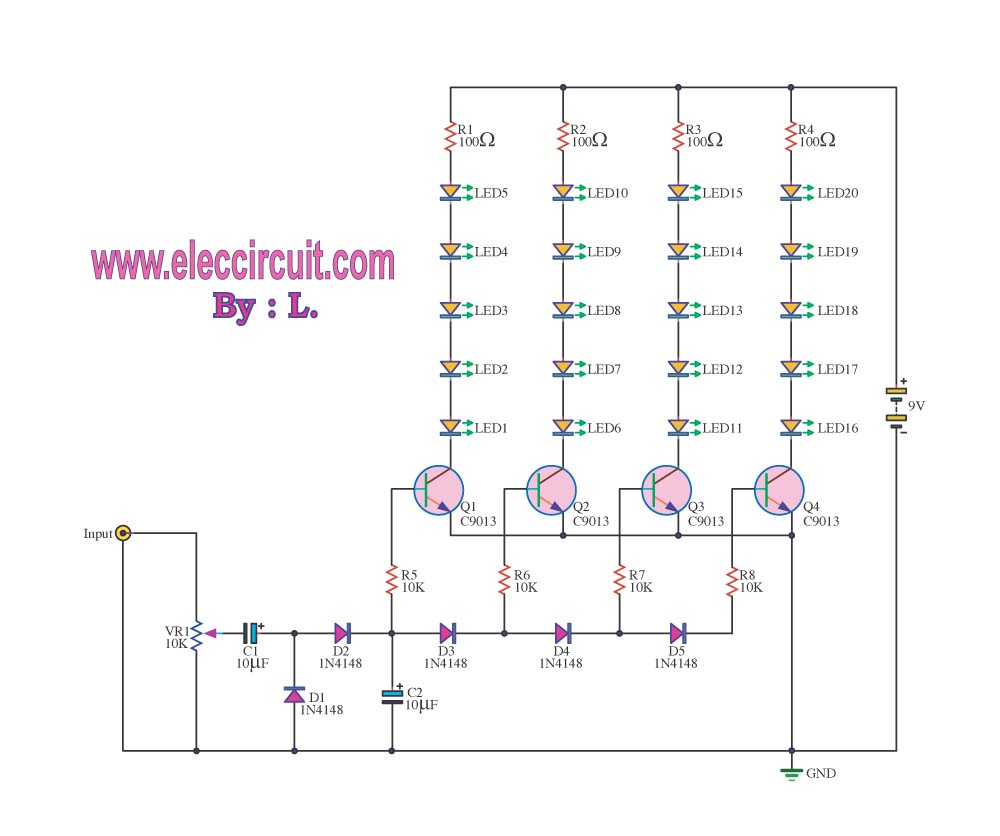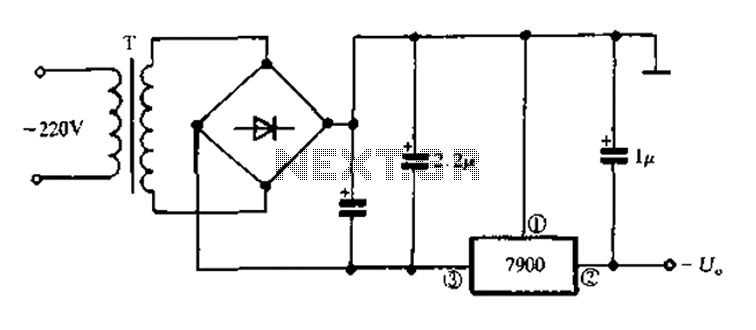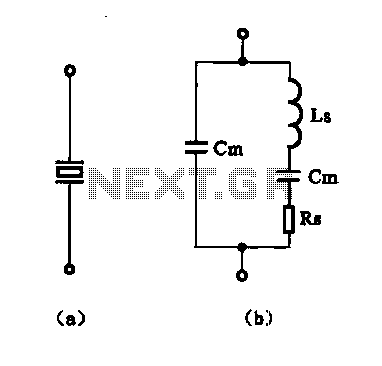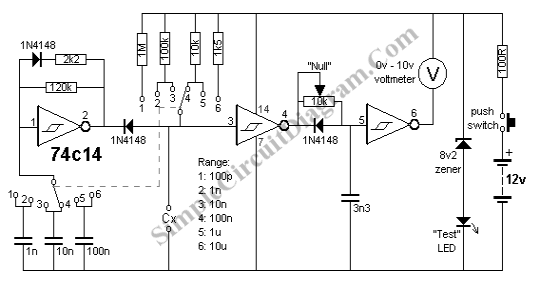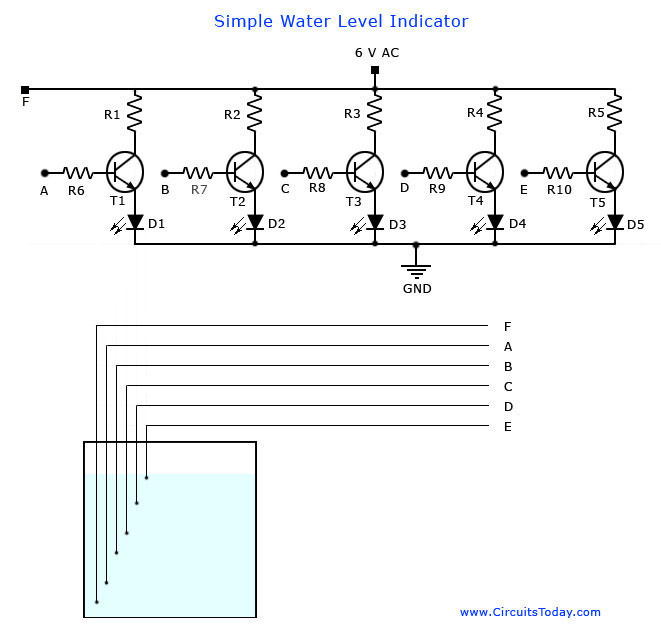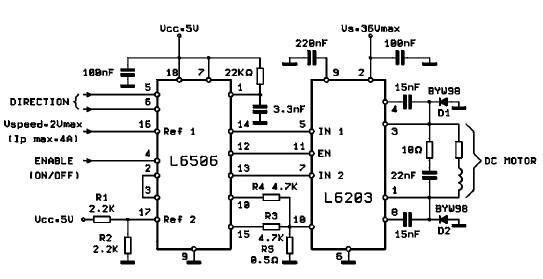
Stress self-test circuit
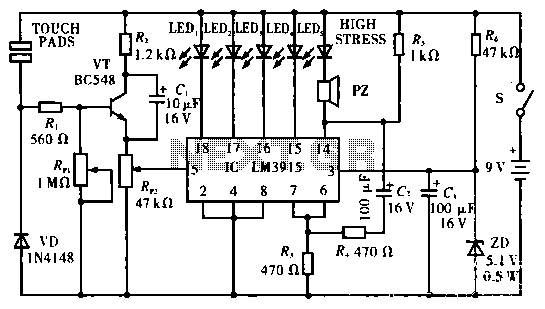
The circuit operates by utilizing two self-test table contact pads that detect electric pressure changes across the skin. The input voltage is 5 volts, which can drive up to 10 LEDs (the current configuration includes only 5 LEDs). When the voltage reaches 150 mV, LED1 illuminates; when the voltage increases to 650 mV, LED5 illuminates.
The schematic features a simple yet effective design for monitoring skin resistance through electric pressure changes. The two contact pads serve as electrodes that measure the voltage drop across the skin, translating this into a corresponding LED indication. The circuit is powered by a 5V supply, which is a standard voltage for many electronic components, ensuring compatibility and ease of integration.
The operation begins when the contact pads make contact with the skin, allowing for a small current to flow. This current generates a voltage drop, which is sensed at the input of the circuit. A comparator or an operational amplifier can be employed to compare the input voltage against predefined thresholds. In this case, the thresholds are set at 150 mV and 650 mV, corresponding to the activation points for LED1 and LED5, respectively.
The output stage of the circuit likely consists of a series of transistors or MOSFETs that drive the LEDs. Each LED is connected in parallel to the output of the driving circuit, ensuring that as the voltage increases, the appropriate transistor is activated to illuminate the corresponding LED. This visual feedback mechanism provides an intuitive way to monitor changes in skin resistance, which can be useful in various applications, including medical diagnostics and biofeedback systems.
In summary, this circuit effectively demonstrates the relationship between skin pressure changes and electrical signals, using a straightforward LED indication system to visualize these changes. The use of low voltage and simple components makes this circuit both safe and accessible for experimentation and educational purposes.Circuit works: two self-test table contact pads sensed across the skin to the electric pressure changes lC input of 5 feet, can drive 10 LED (present circuit only with 5 LED). When the voltage is 5 feet 150 mV, LED1 light; when the voltage elevated to 650 mV, LED5 light.
The schematic features a simple yet effective design for monitoring skin resistance through electric pressure changes. The two contact pads serve as electrodes that measure the voltage drop across the skin, translating this into a corresponding LED indication. The circuit is powered by a 5V supply, which is a standard voltage for many electronic components, ensuring compatibility and ease of integration.
The operation begins when the contact pads make contact with the skin, allowing for a small current to flow. This current generates a voltage drop, which is sensed at the input of the circuit. A comparator or an operational amplifier can be employed to compare the input voltage against predefined thresholds. In this case, the thresholds are set at 150 mV and 650 mV, corresponding to the activation points for LED1 and LED5, respectively.
The output stage of the circuit likely consists of a series of transistors or MOSFETs that drive the LEDs. Each LED is connected in parallel to the output of the driving circuit, ensuring that as the voltage increases, the appropriate transistor is activated to illuminate the corresponding LED. This visual feedback mechanism provides an intuitive way to monitor changes in skin resistance, which can be useful in various applications, including medical diagnostics and biofeedback systems.
In summary, this circuit effectively demonstrates the relationship between skin pressure changes and electrical signals, using a straightforward LED indication system to visualize these changes. The use of low voltage and simple components makes this circuit both safe and accessible for experimentation and educational purposes.Circuit works: two self-test table contact pads sensed across the skin to the electric pressure changes lC input of 5 feet, can drive 10 LED (present circuit only with 5 LED). When the voltage is 5 feet 150 mV, LED1 light; when the voltage elevated to 650 mV, LED5 light.
